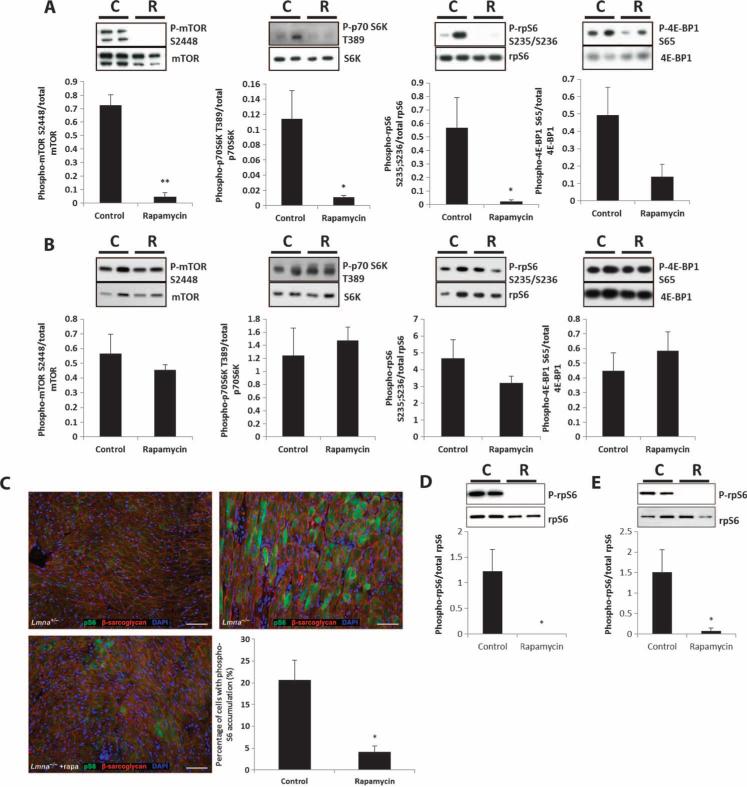Fig. 4.
Signaling through the mTORC1 pathway in heart and muscle of Lmna–/– mice is reduced by rapamycin treatment but is dependent on dosage. (A) Phosphorylated mTOR(S2448), S6 kinase(T389), and rpS6(S235/S236) were decreased in hearts from Lmna–/– mice fed the rapamycin diet (R) (n = 6) compared to Lmna–/– mice fed the control diet (C) (n = 6). Phosphorylation of 4E-BP1(S65) was not significantly reduced. (B) Phosphorylated mTOR(S2448), S6 kinase(T389), rpS6(S235/S236), and 4E-BP1(S65) were not significantly reduced in muscle from Lmna–/– mice fed the rapamycin diet (R) (n = 6) compared to Lmna–/– mice fed the control diet (C) (n = 5). (C) Immunohistochemistry of heart tissue sections from Lmna–/– mice fed the rapamycin diet (n = 3), which showed a significant decrease in the percentage of cardiomyocytes with accumulation of phosphorylated rpS6 compared to Lmna–/– mice fed the control diet (n = 3). (D and E) Phosphorylated rpS6(S235/S236) was decreased in heart and muscle from Lmna–/– mice injected with rapamycin (R) (8 mg/kg) (n = 4) compared to vehicle-injected Lmna–/– mice (C) (n = 4). Panel (D) is heart and panel (E) is muscle. *P < 0.05; **P < 0.01.

